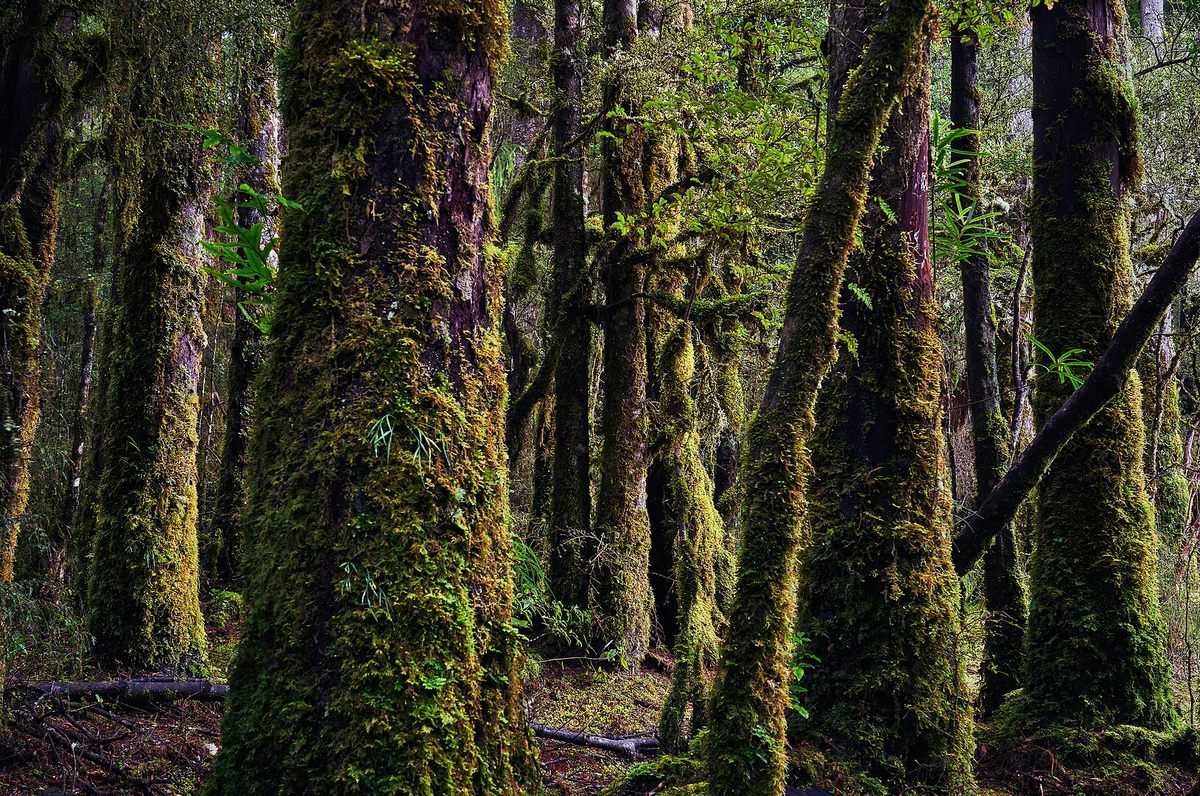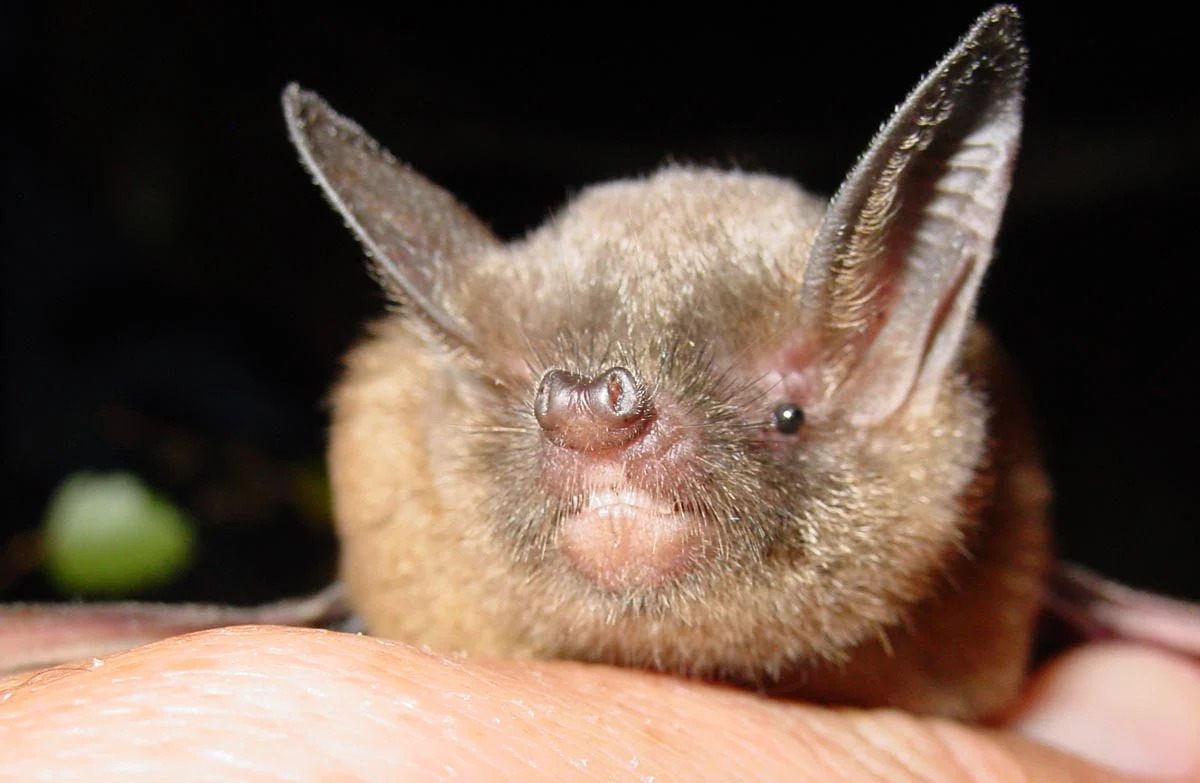The Race to Save the Pekapeka-Tou-Poto, New Zealand’s Unique Bat
For scientists, monitoring the feisty, endangered burrowing bat includes moments of “actual madness.”
On a summer’s night in Pureora Forest Park, a reserve in the center of New Zealand’s North Island, biodiversity ranger Troy Macdonald is crouched in a clearing. Headlamp on red, he struggles to unfurl the delicate wings of a mouse-sized pekapeka-tou-poto, or lesser short-tailed bat (Mystacina tuberculata).
It’s Macdonald’s first time taking part in the park’s annual bat monitoring program, and this task—working out whether the bat is a juvenile or adult by examining its wing development—is particularly fiddly, especially when you’re wearing thick leather gloves to protect against bat bites. “It’s like trying to roll a cigarette with wet paper!” he says.
While helping teammates clip small fur samples for DNA analysis, Macdonald found the bats “pretty strong and feisty little animals… They wriggle a lot unless you have a nice, firm grip on them, and they actually bit through my gloves a couple of times—it felt like a little needle,” he says. “But I understand. I mean, I wouldn’t want to be handled by some big hairless monkey, either.”
Weighing just 12-15 grams (about half an ounce), and sporting snub noses, sharp teeth, beady black eyes, and huge translucent ears, these diminutive creatures are found at just a few isolated sites scattered around New Zealand. Most bats catch their prey in the air, but pekapeka-tou-poto are the only surviving members of the ancient Mystacinidae family of burrowing bats. In addition to flying, these bats scurry around the forest floor on folded wings, hunting for insects, fruit, pollen, and nectar. Males of the species are particularly vocal and often compete for preferred roosts where they perform to attract mates.

At Pureora, the bats roost in the high-up hollows and crevices of giant, centuries-old native conifers called podocarps. Most of their known roosts are in a single stand of ancient moss-covered trees called the Pikiariki Ecological Area, which sits at the edge of the park and borders an expanse of treeless farmland. There, the bats make their homes in the lichen-strewn, epiphyte-rich forest canopy, around 30-40 meters (about 100 feet) off the ground.
These tiny animals play critical roles in their ecosystem. At Pikiariki, they’re the sole pollinators of a threatened plant that grows only in that area: The wood rose (Dactylanthus taylorii), neither wooden nor a rose, grows on tree roots on the forest floor and attracts the bats by emitting a musky, sweet smell. The animals bury their faces in the flower to drink its nectar, getting covered in pollen that they then distribute as they continue to forage.
Crawling around on the forest floor worked fine when the bats had few predators, before humans came to New Zealand. “They would have been all over the place,” said Department of Conservation (DOC) science advisor and bat expert Kerry Borkin, who was also involved in this year’s bat monitoring project. But when humans showed up, bringing rodents, cats, and dogs in tow, all that changed. The bats were extirpated over most of the archipelago and are currently classified as endangered, their numbers declining.
At Pureora, scientists monitor the pekapeka-tou-poto each year to get a sense of population survival rates and gauge the effectiveness of their predator control efforts. In late summer, a DOC team visits known roosting sites in Pikiariki. Just before dusk, in front of each roost, the team uses a system of ropes and pulleys to hoist what are known as harp traps: vertical metal frames with two rows of fine thread strung across them, with a catching bag at the bottom. Once the traps are in place well above the forest floor, the team waits for the bats to fly out to feed for the night. Several of the departing bats harmlessly hit the strings and fall into the bag; once the team has collected enough of them, they lower it to the ground.

“I remember getting a really big feeling of excitement when we first brought the harp traps down,” says Macdonald. “You could hear [the bats] running around, and it sounded like dripping water—it’s a really strange sound. And when you get the net down to the ground and you have a look at them, they pile up in the corners together, and they’re all chirping and yelling at each other. It’s actually madness.”
Using headlamps, team members sort through the wriggling piles and release any animals tagged in previous years. Then, they transport the remainder to their base to assess the animals, take fur samples, and tag them with transponders. The tags are tracked by a “bat logger” network of antennae, set up outside known roosts during the monitoring period, which collect information about the animals’ activity.
The goal of this summer’s monitoring was to capture and tag 200 animals over four sequential nights and then use the loggers to track their movement to and from roosts for several weeks. The fieldwork was a success: 219 bats were tagged, and 788 (including previously-tagged animals) were detected over the logging period, providing crucial data towards understanding their annual survival rates.
Ongoing pest control is critical to the pekapeka’s survival. At Pureora, it’s carried out year-round using a variety of trapping and poisoning options. Rats, possums, stoats, and ferrets are the main offenders, but in 2022 Borkin found irrefutable proof that cats were also a concern. The local rangers found cat feces near one of the Pikiariki roosts, put traps out, and caught two feral cats. Then, Borkin dissected the animals and found an almost-intact pekapeka in one cat’s stomach. “It showed just how lucky it was that that cat had been caught,” she says.
For Macdonald, that first monitoring experience has made a lasting impact. “It’s kind of hard to put into words, but I feel very honored to have done this and gotten to see them up close,” he says. “Our bats aren’t big and showy; they don’t come out and present themselves. They’re all hidden away and you’ve got to know exactly where you’re looking for—and that’s what makes it so special.”































Follow us on Twitter to get the latest on the world's hidden wonders.
Like us on Facebook to get the latest on the world's hidden wonders.
Follow us on Twitter Like us on Facebook